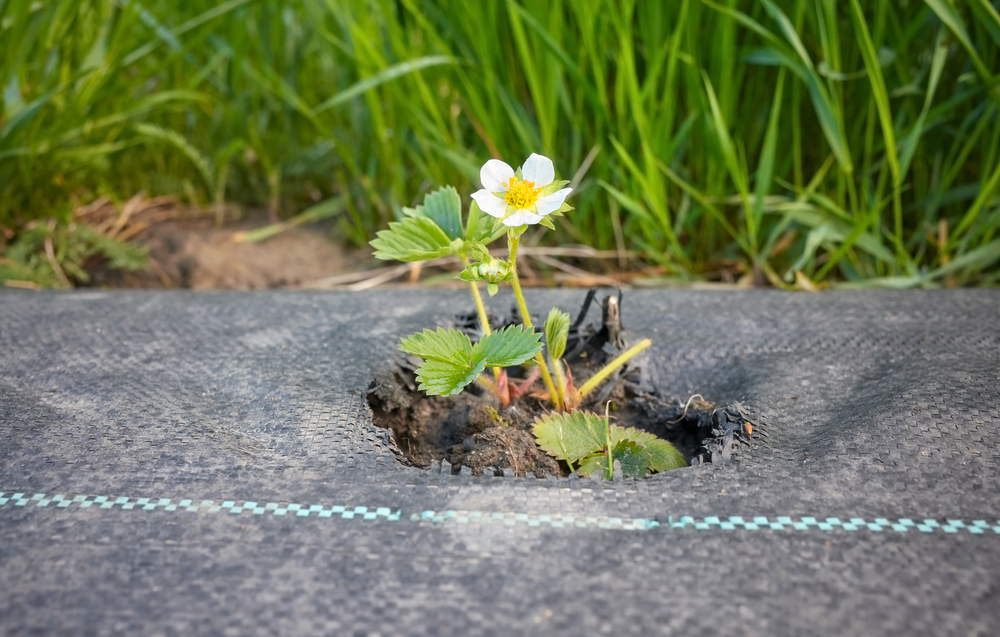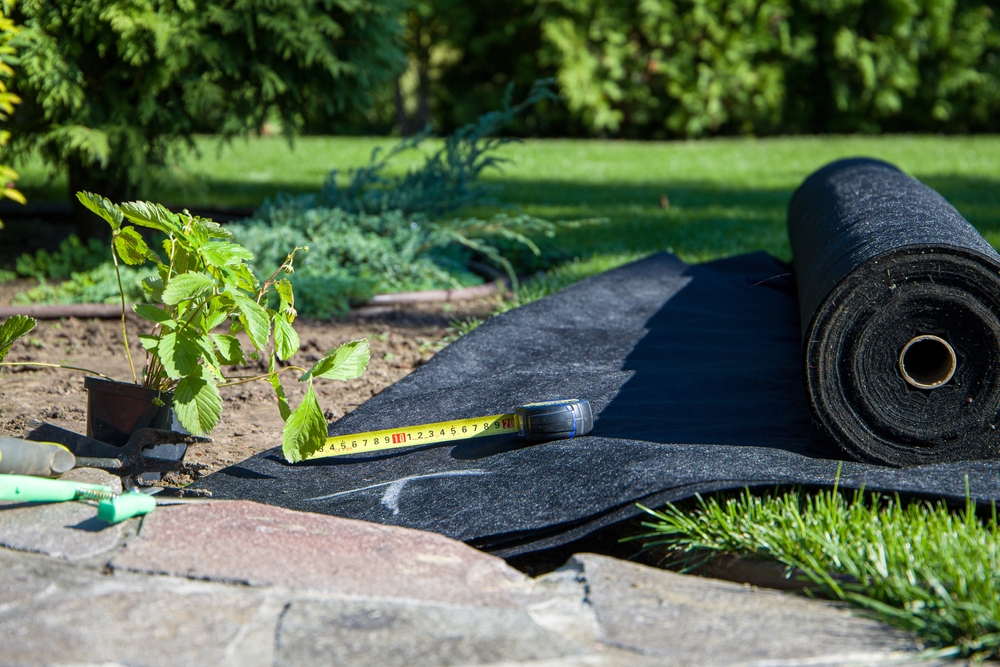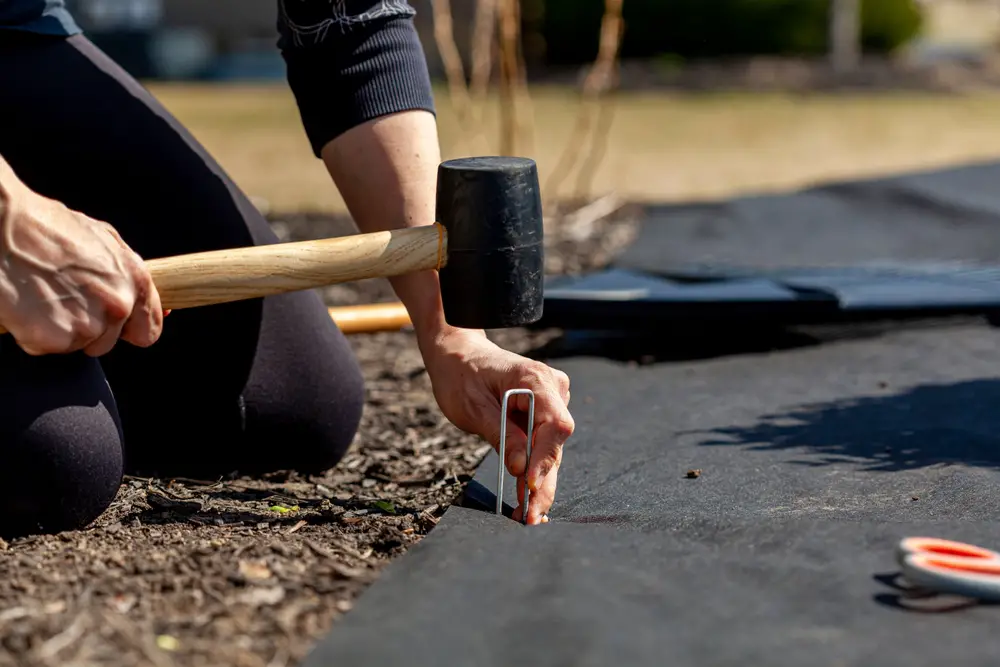As a professional garden consultant, I have had many clients ask me about landscape fabric. In short, it’s a material manufacturers allege prevents weeds in your garden.
And what gardener doesn’t want that?
Unfortunately, landscape fabric doesn’t live up to those expectations. In fact, it creates more problems than it solves in the long run.
But let’s talk a little more about what landscape fabric is before we get further into that, including whether or not you should ever use it.
So, just what is landscape fabric?
It’s A Specialized Material
Landscape fabric (also known as weed cloth, weed barrier, and weed fabric) is a black woven plastic or felt-like material sold in rolls. Manufacturers often treat it with chemicals so it doesn’t break down in the sunlight over time. In other words, they make it to last.
They also sometimes treat the material with weed killer.
They make some newer fabrics from biodegradable materials like coconut fibers, grasses, or wood pulp. The claim is they break down once tilled into the soil at the end of the growing season. These are sometimes labeled as “paper mulch” and are marketed for short-term use.
The fabric being black blocks sunlight from reaching the soil, preventing weeds from growing underneath it. Landscape fabric also has fine pores to let water flow through it.
Unfortunately, the fabric isn’t very attractive, so most users cover it up with a nicer-looking mulch like shredded bark or wood chips.
Manufacturers Originally Developed It For Agricultural Applications
Knowing this is essential since agricultural growing is different from growing in a home garden. However, now manufacturers market landscape fabric as useful for both.
But it isn’t.
Landscape Fabric Causes More Problems Than It Solves For Your Garden

At first, landscape fabric will prevent weed seeds from growing underneath it, and the fresh mulch will look nice and tidy. However, after a year or two, this will change.
Weeds Will Eventually Grow Anyway
The mulch will start to break down, collecting soil particles. This creates the perfect growing conditions for weed seeds carried by the wind. These weeds can root into or right through the fabric (like dandelions), which makes it harder to pull them out than if they were growing just in bare soil.
I’ve had garden clients who put down landscape fabric before I came to work on their gardens, and I’ve had to deal with plenty of weeds growing in the mulch over fabric. Believe me, the fabric creates more work in the long run than it’s worth.
There are also some weedy invasive plants (e.g., bindweed, horsetail, Japanese knotweed) that spread aggressively with underground runners called rhizomes. These can grow without light under landscape fabric and form thick spaghetti-like masses. They keep spreading until they find the smallest holes or come to the edges of the fabric, where they send up new shoots.
Topping Up The Mulch Buries The Fabric
Additionally, you’ll need to top these mulches every few years. This buries the fabric under ever more layers. I’ve worked with garden clients who’ve lived in their homes for just a few years and had no idea there was even landscape fabric in their garden beds!
Digging Holes Is A Nightmare
When I tried to dig holes for new plants, I couldn’t get my shovel into the soil because I hit a layer of landscape fabric. Since they’re designed to last, you can’t easily cut through these fabrics with a shovel. This is before considering how plant roots grow into the fabric.
Removing It Is Also A Nightmare
I always advise removing landscape fabric from garden beds, but that can be back-breaking work. Worth it for the health of the garden but not fun.
It Creates Poor Growing Conditions
After a year or two, landscape fabric doesn’t allow water to pass through it into the soil because its pores clog with fine dust and soil particles. As a result, the soil underneath starts drying out, and plants can’t get the water they need (keeping in mind how much water plants need per day varies).
The clogging also prevents oxygen and other gases from moving as freely through the soil’s surface and layers underground. This suffocates the soil and living organisms and roots in it. Eventually, the organisms may move somewhere else, making the soil even more unhealthy.
It Hinders Beneficial Organisms In The Soil
As an example, worms tunnel in the soil and keep it from getting packed down. They also move nutrients down into the soil for plants to use. Packed soil devoid of nutrients is unhealthy soil. When the soil is unhealthy, plant health will suffer, too.
Landscape fabric prevents this.
Should You Ever Use Landscape Fabric?

You can use landscape fabric in some cases.
For example, you can use it to create pathways through vegetable gardens or between raised garden beds. In other words, you can put it where you’re planning to have no plant growth at all. This includes decorative features like dry stream beds. Most people cover it with rocks or stones in these cases, but you’ll still need to replace it over time.
You can also use it to grow plants for one season, then remove it from the soil at the end of that season. Short-term installations like this are ideal.
However, generally, you should avoid using landscape fabric if you can. Alternatives exist, and it’s usually more of a hassle than it’s worth.

